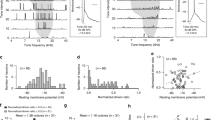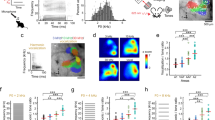Abstract.
Perception of complex communication sounds is a major function of the auditory system. To create a coherent percept of these sounds the auditory system may instantaneously group or bind multiple harmonics within complex sounds. This perception strategy simplifies further processing of complex sounds and facilitates their meaningful integration with other sensory inputs. Based on experimental data and a realistic model, we propose that associative learning of combinations of harmonic frequencies and nonlinear facilitation of responses to those combinations, also referred to as “combination-sensitivity,” are important for spectral grouping. For our model, we simulated combination sensitivity using Hebbian and associative types of synaptic plasticity in auditory neurons. We also provided a parallel tonotopic input that converges and diverges within the network. Neurons in higher-order layers of the network exhibited an emergent property of multifrequency tuning that is consistent with experimental findings. Furthermore, this network had the capacity to “recognize” the pitch or fundamental frequency of a harmonic tone complex even when the fundamental frequency itself was missing.
Similar content being viewed by others
Author information
Authors and Affiliations
Additional information
Received: 6 October 2001 / Accepted in revised form: 21 January 2002
Rights and permissions
About this article
Cite this article
Medvedev, A., Chiao, F. & Kanwal, J. Modeling complex tone perception: grouping harmonics with combination-sensitive neurons. Biol Cybern 86, 497–505 (2002). https://doi.org/10.1007/s00422-002-0316-3
Issue Date:
DOI: https://doi.org/10.1007/s00422-002-0316-3




